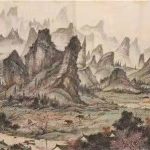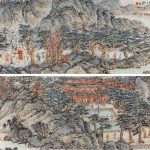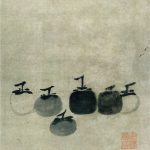Concretion and Abstraction in Chinese Painting: The Mountain Villa Scroll by Li Gonglin
Issue 4 – By; Thorsten Schirmer
In Chinese culture a completely independent tradition of painting exists in addition to Western painting that shows a continuous development from its earliest time to present. For more than 2000 years, laws have evolved and preserved in China, formulating a unique alternative to the painting tradition of the west. In which context does this tradition stand to the principles of the concrete and the abstract? On this occasion an attempt to shed light on both terms has to be prefixed. While concretion found a clear definition in the term “objectification”, the word abstraction requires a paraphrase. The Brockhaus Encyclopedia explains abstraction as:
“Method by which specific, for the context essential characteristics are singled out to obtain general concepts and laws referring to a subject.”1
An attempt to explain the specific nature of the Chinese painting tradition leads us directly to the definitions of abstraction above. It is no exaggeration to say that the painting tradition of China has been fully committed to abstraction. A masterpiece has to keep the essence of the painted subject. But what is the essence in the view of the Chinese culture? Emptiness is essence, teaches us Daoism. It is the primal creative principle of all being. Here Daoism reaches hands with Buddhism, as expressed in the Heart Sutra:
“Form is nothing but emptiness, emptiness is nothing but form.”
According to Daoism and Buddhism, the highest form of abstraction is the essence, essence is emptiness. Following this argument, it is necessary to abstract the form to the extent that the essence can be felt in it. Form and emptiness build a unit, the contrast of the concrete and the abstract dissolves in a higher level of knowledge. In fact, the Chinese painting has found its most elementary principle in the interplay of form and emptiness. Already the earliest samples of this art show us images or landscape symbols, freely composed into an empty background. On each step of its development, the interpenetration of form and emptiness increased further until the 13 century, in which the work of some Chan painters2 reached almost totally abstract (i.e. non-representational) results. However, they never left the ground of representational painting completely.
This was made possible only after the artist and statesman Su Dongpo (1037-1101) proclaimed the final emancipation of the artist’s free spirit in painting of the 11th century. He coined the term “Xieyi” (literally: writing down an idea) as a paraphrase of expressionism, which is characterized by the reduction to a few expressive lines and lavurs in a spontaneous manner of painting. Xieyi borrowed the free and fluid brushwork from the calligraphic concept-style.
Particularly characteristic of the conservative spirit of China is the way, in which scenic solutions of great masters of the past were used continuously over the centuries. Their technique and styles were handed down and canonized. Textbooks like the “Mustard Seed Garden”3 were widely spread, in which the individual design elements of Chinese painting such as mountains, trees, grasses, flowers, figures, etc. were explained on the basis of classical models of the great masters. These could be summarized as set pieces and endlessly varied by subsequent generations of artists as a recipe, of course with always the same ingredients. The advantage of this typed models is their universal applicability. Human images, for example, do not meet any high expectations of an individual and correct physiognomy. It extends the traditional representation of the type, which is enough for the viewer to understand the information of the image. An abstract form, handed down from the ancient masters, automatically finds the acceptance of the artist as well as the audience. The disadvantage of this often stereotyped imitation is obvious. While it makes satisfying results in painting easy to reach even for little creative minds on the one hand, on the other hand the slavish adherence to traditional modes of representation often paralyzed the development of new styles and forms of expression.
Reduction of the media to focus on the essentials is finally documented in Chinese painting by the widespread abandonment of color. While the monochrome display has been used traditionally for sketches and studies in anticipation of a colored masterpiece in the West, the exact opposite development took place in East Asia. In the 9th century, the monochrome illustration in black ink began to enforce after a long development of polychrome painting that lasted for centuries. The conviction, that the black ink not only replaces color completely but that monochrome painting ultimately attains the summit of abstraction, reflects the philosophical foundations of this art. Starting from the idea of unity of their philosophical sources, it seems quite logical to represent the world and its phenomena by a single shade.
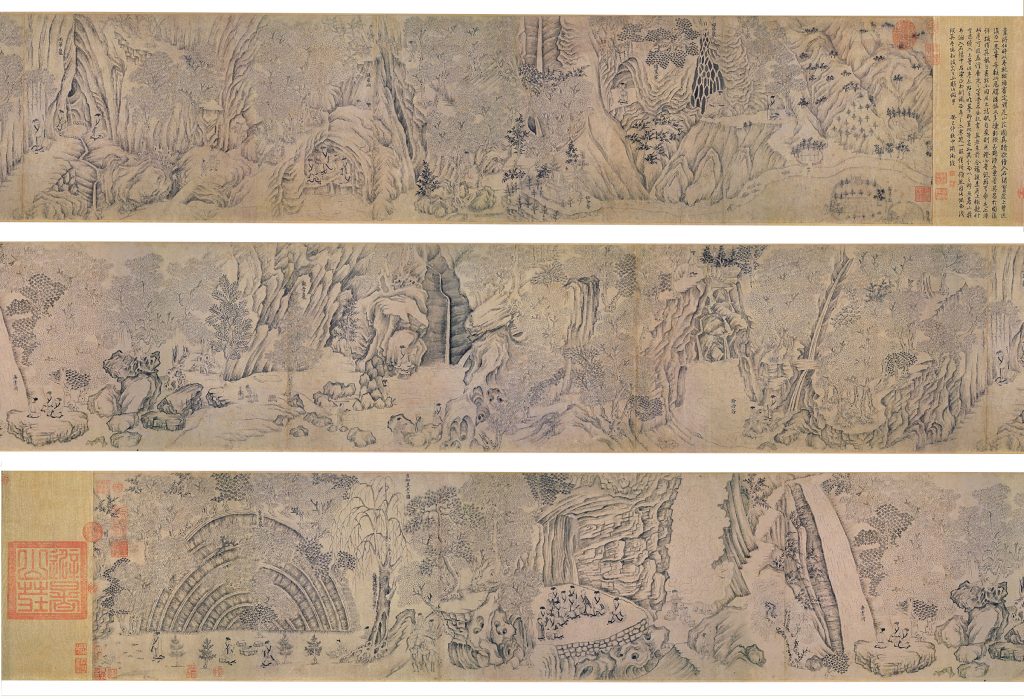
Li Gonglin and his Mountain Villa Scroll:
Concretion and Abstraction in the Art of an Outstanding Chinese Painter from the 11th Century
As we have seen, abstraction plays the leading role in Chinese painting tradition. This fact raises the question if there is any masterpiece in the history of Chinese painting to be found at all, which is dedicated to concretion. One of the view ancient masterpieces of Chinese painting, which shows a real landscape, is the Mountain Villa Scroll by Li Gonglin (about 1049 – 1106).4 He was one of the close friends of Su Dongpo and a member of his circle in Kaifeng. The influence of Su and his friends on the development of the Chinese painting tradition has been mentioned above. What makes Li special under a group f well educated and highly trained artist is the fact, that his fellows praised him as the best literati painter of his time. Chinese art history honors him a the founder of the Baimiao Style, which is based on the pure ink line and makes no use of color and shows only little use of ink washes. Li Gonglin’s fame has lasted from his lifetime till present. The influence of his style can be also proved in ancient Korea and Japan. He belongs to the small group of “inks sages” that build the backbone of East Asian ink painting tradition.
Born and raised in Shucheng, a town next to the Longmian Mountains in modern Luan Prefecture, Anhui Province, he passed the imperial jinshi exam in 1070, but instead of starting his official career in the capital Kaifeng, he preferred to live a secluded life in the Longmian Mountains for nearly 10 years. Some years later when he worked as an official in the capital Kaifeng, Li Gonglin remembered his mountain villa still very often, longing to escape from the burden of officialdom. Finally he painted a long scroll of his mountain villa and its surroundings at Longmianshan in two versions – a draft version with pure ink on paper and a final version with ink and light colors on silk.5 This raises the question if Li Gonglin shows a concrete landscape scene in his Mountain Villa Scroll. He even wrote the names of buildings and natural sights onto the draft version of the scroll. This offers the rare – if not unique – opportunity, to examine a masterpiece from the heyday of Chinese landscape painting for its degree of concreteness and abstraction by matching it with the real landscape of Longmianshan. Thanks to my good contacts in Luan, I felt optimistic that I could realize my plan, to visit Longmianshan for a research on Li Gonglin’s Mountain Villa Scroll comparing it with the real landscape. During an international conference in 2014 at the Institute for Art Science and Art Practice of Leibniz University Hannover, Germany, I gave a lecture about concretion versus abstraction in the Chinese painting tradition. Finally, Eva Koethen, head of the institute, encouraged me, to realize this project, which tries to clear the following questions:
– Does the painting really show the concrete landscape or an abstraction of it?
– What is still known about the Mountain Villa and its location?
– Are there any sights shown in the painting which can be identified?
– If they exist, what are the similarities or differences between the concrete sights and the painting?
Li Gonglin is highly praised across East Asia for his individual style as well as for the deep spirit of his paintings. The Mountain Villa Scroll is one of his most influential works. How much concrete or abstract it may offers, has been discussed since Li Gonglin’s brush gave birth to it. Early admirers of the painting were so impressed by the details of the mountain sights that some of them even praised it to be as concrete as a map of Longmianshan. Su Dongpo, a close friend of Li Gonglin, argued against those opinions in this way, that only because Li Gonglin had grasped the essence of the mountains and rivers at Longmianshan he had been able to produce such a wonderful piece of art. However, only examining the real environment could bring out the truth, but as far as we know none of these early admirers of the scroll knew the sights of Li Gonglin’s mountain villa at Longmianshan. So the following report tries to answer a more than 900 years old question.
The Home of Li Gonglin:
Shucheng and the Longmianshan
Today Shucheng is a small sized city with some 200.000 citizens which lays about 60 kilometers southwest of Hefei, capital of Anhui Province. In the Northern Song Dynasty Hefei was the capital of Luzhou Prefecture, to which Shucheng belonged. Shucheng was mentioned for the first time in the 11th century B.D as Shu State. During the Northern Song Dynasty, the Family of Li Gonglin played a leading part in its upper class with the most jinshi holders of the town. In 2001 the Feixia Park in the old center of Shucheng has been built for honoring Li Gonglin. According to the Municipal Office of Tourism the park (Fig. 1) stands on the ground of the ancient residence of Li Gonglin’s family, as mentioned through official documents from the Yuan Dynasty (1271–1368).
Within the park there is a memorial hall with a modern bust of Li Gonglin. Since there is no handed down image of the artist, one has resorted an ideal portrait of a song temporal official. Another similar statue of Li Gonglin stands south of Shucheng in the center of Tangchizhen, a small town on the northern edge of Longmianshan (Fig. 2). The area named Longmianshan lays about 20 kilometers south of Shucheng and means the last section of the Dabieshan in the East. The Dabieshan is a mountain area in the triangle of the provinces Anhui, Hubei and Henan, about 250 kilometers long which rises up to nearly 2,000 meters above sea level. The Dabieshan is known for its rich flora and fauna, is traversed by extensive bamboo forests and is a traditional area for producing excellent teas. With its steep rocky peaks and lush valleys, it is one of the most beautiful mountain landscapes of China. Special mention deserves the Tianzhushan (1489 m) who already was considered in ancient times a sacred mountain. It is located approximately 90 kilometers southwest of Shucheng and was likely a special attraction for the devout Buddhist Li Gonglin. The Longmianshan (lit. “Sleeping Dragon Mountains” – a name that alludes to its elongated, winding form) referred to the eastern end of the mountain range on the southern border of Luan Prefecture between Shucheng County and Tongcheng County of Anqing Prefecture. On Luan side, the western part of Longmianshan rises up to 1539 meters, the eastern part next to Shucheng City rises up to 1065 meters.
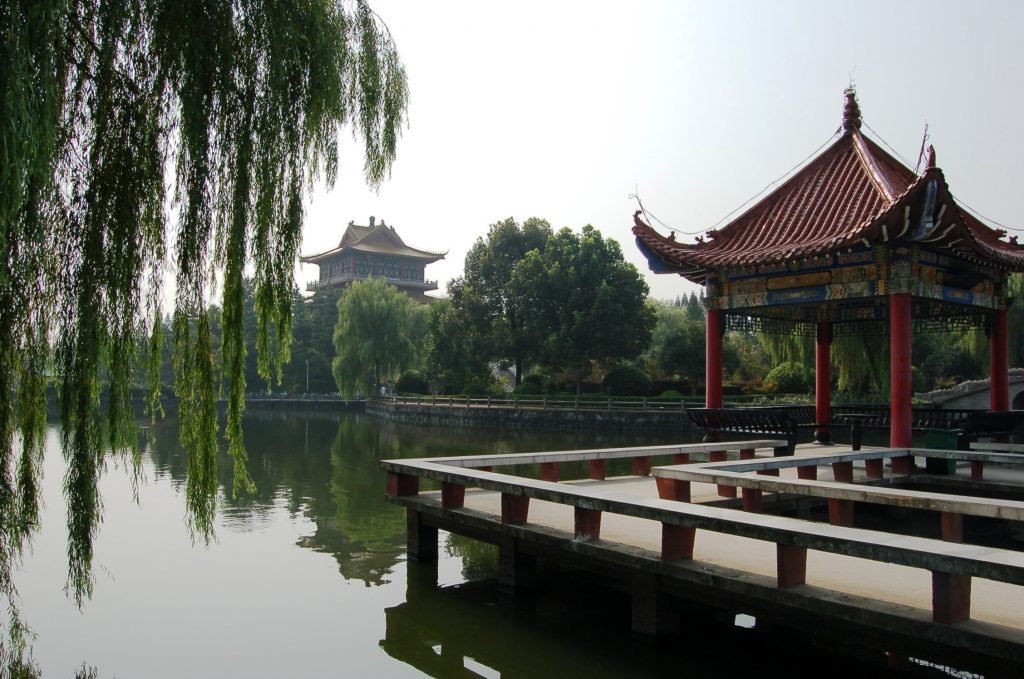
For Li Gonglin it was probably and simply the closest gateway to the mountains. To choose it as the location of his mountain villa may well have had practical reasons. The main residence of the Li family in Shucheng was still in an acceptable range. In winter it can be quite cold in the mountains. It is therefore unlikely that the estate served as an all year dwelling place. As Anyi Pan also reveals the area around the Longmianshan was a center of Chan Buddhism. Pan even talks of a separate line within the different schools of Chan that he named “Longmian-Chan”.6
The tradition of Chan Buddhism in the Dabieshan region has a long tradition and goes back to the third patriarch of Chan, Sengcan (d. 606), who lived there for many years and died at the foot of Tianzhushan. The religious environment in his home area seems to have had a lasting influence on Li Gonglin and is documented extensively in his Mountain Villa Scroll by the names with Buddhist background, he used for his dwellings and for the natural sights of Longmianshan.
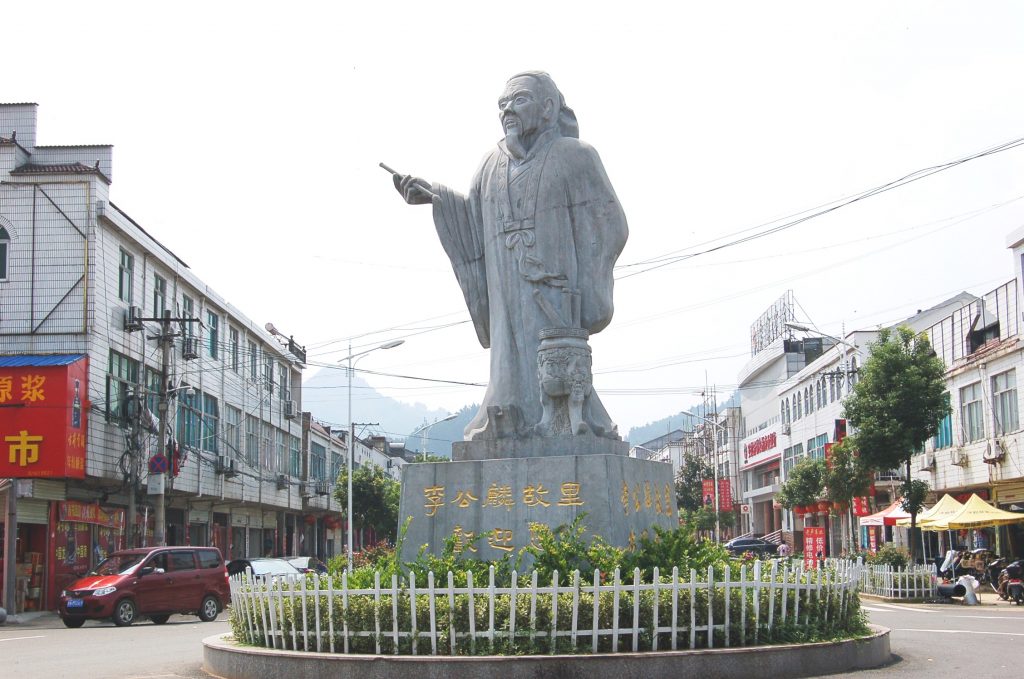
Searching for Clues at Longmianshan:
The Mountain Villa Scroll and the real landscape – a comparison
My research suggests that this may have been previously not systematically carried out or documented by the Chinese side, and according to information from the local authorities it seems that I have been the first westerner visiting Longmianshan for such a reason. Facing the impermanence of Chinese wooden architecture, we cannot expect to find traces of settlement sites from Song Dynasty at Longmianshan. Quite different is the case with the landscape sights of the scroll. If some of them could be verified, it would be possible to enclose the approximate location of the buildings which Li Gonglin shows us in his painting.
In August 2015, the Foreign Affairs Office of Luan Municipal Government arranged my visit to Shucheng. I was supported by a group of guides of the local Office of Tourism and the Li Gonglin expert Song Zhefa of Shucheng. The excursion was organized and led by Zheng Shuhua from the Foreign Affairs Office Luan, who was born and raised in Shucheng. As it turned out locally, this measure proved to be indispensable, because there was neither a topographic map of Longmianshan nor even street signs or signposts. After leaving Shucheng to the south, you will reach the first foothills of Longmianshan after some miles in the form of densely wooded hilltops. Behind the small town Tangchizhen the mountains begin to gain altitude. The area where the location of the mountain villa and the sights of the scroll should have been lying covers approximately 30 square kilometers. You finally reach the southern edge of Shucheng County by an elongated valley through which a river runs northbound (Fig 3).
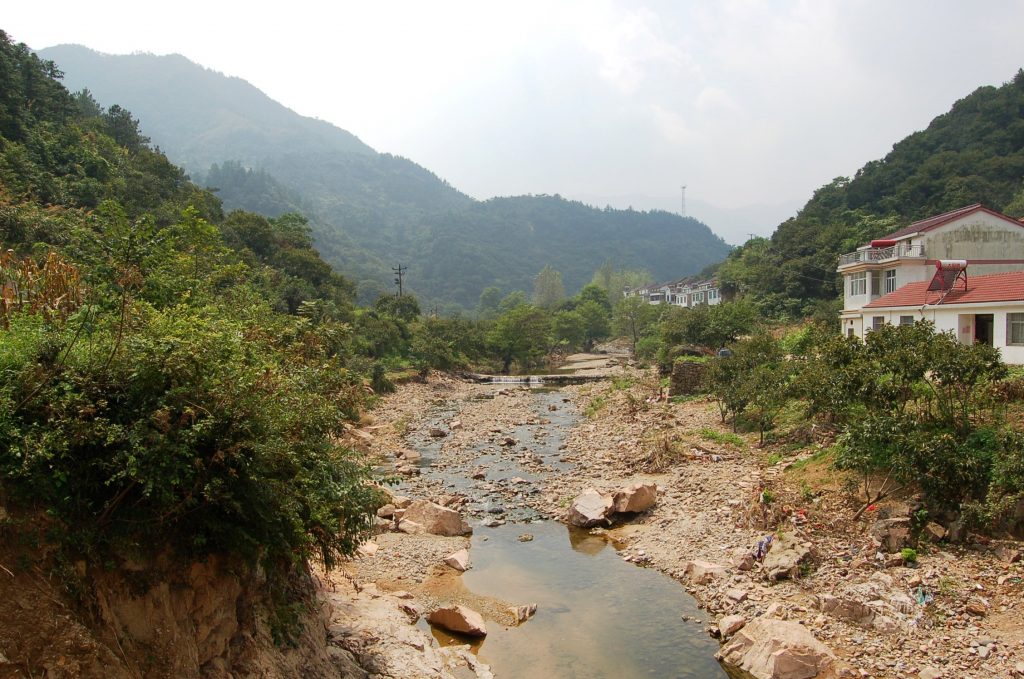
At the time of my visit, it had low water levels. Through further inflows the river gets wider and after leaving the mountains it finally joins the Chaohu Lake east of Shucheng. In its various sections it is called differently. At the headwaters in the mountains it is called Longmian River, while the northern section as it emerges from the mountains southwest of Shucheng is still know as Magpie Stream (鹊 源). Thus, we were able to identify the first concrete sequence of the Mountain Villa Scroll (Fig. 4) that we faced by visiting this river section.
We reached the appropriate section of the river at the height of 31 ° 21 ’36’ ‘N / 116 ° 50’ 32 ” E, where a bridge crosses the river. Fig. 5 and 6 show the riverbank left (Fig. 5) and right (Fig. 6) of the bridge. The similarity of the landscape with the last sequence of the painting is somewhat vague. Li Gonglin painted the riverbank with bare rocks. In Fig. 6 overgrown rock structures can be seen. Whether the vegetation has prevailed over the centuries more or the artist wanted to emphasize the rocky terrain remains unclear. Coming from the south of the mountains, we have followed the river through a broad valley to this point. On our way we passed the river noticing much flatter riverbanks (Fig. 7), which are not as similar to the painting as the section of our spot at the bridge. In the further course towards the north we suspected no higher potential of congruence, because the landscape remains flat there. With appropriate water level this part of the river seems to be passable by boat as shown in Li Gonglin’s scroll. Certainly during the artist’s lifetime the term Magpie Stream might have been used for a larger section of the river in the upper course too, but the navigability even with flat boats seems to me unlikely because of the rocky riverbed. It finally seems logical that the painting ends with a sequence which is the farest from the presumed location of the mountain villa. In addition, the way from Shucheng to this section of the river is significantly shorter than to the area of the presumed site of the mountain villa. Therefore I find it easy to imagine that a river trip near the foot of Longmianshan may had been one of the popular leisure activities of Shucheng’s upper class during Song Dynasty.
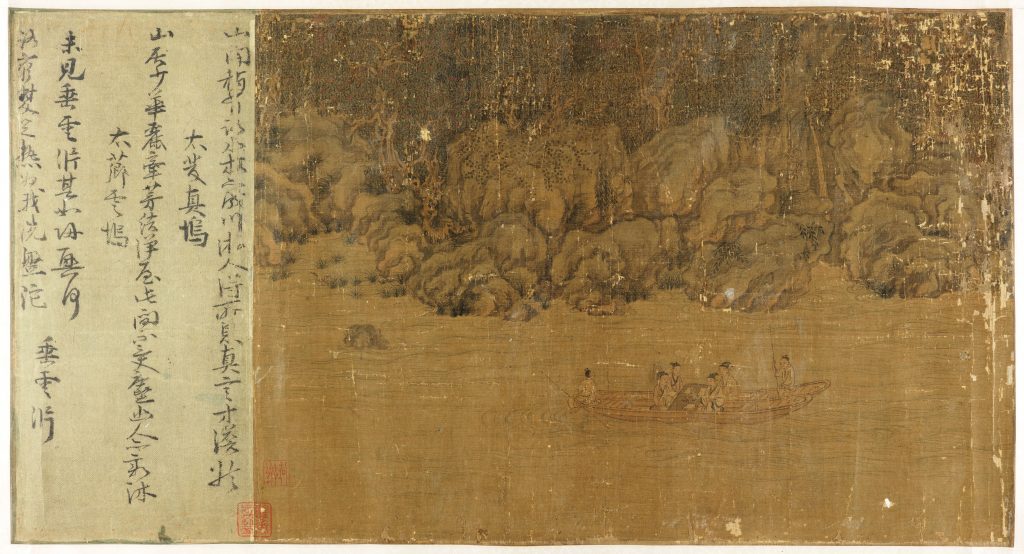
Fig. 4: Magpie Stream Section of Li Gonglin’s Mountain Villa Scroll. Berenson Collection, Villa I Tatti, Florence, reproduction by approval of the president and colleagues of the Harvard College, Photo: Paolo De Rocco, Centrica srl., Florence.
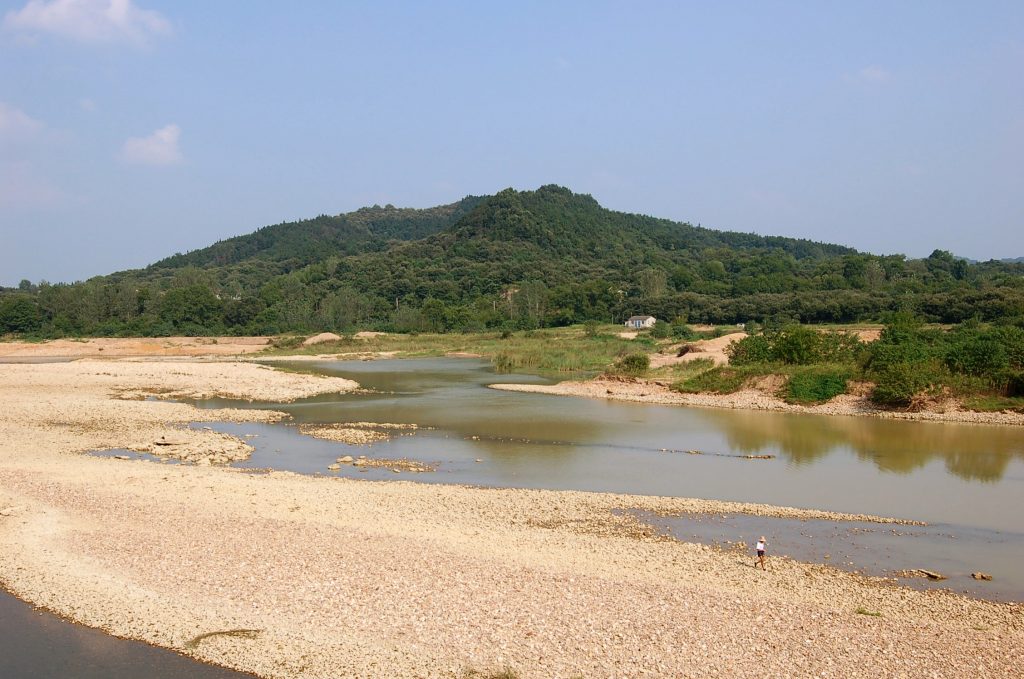
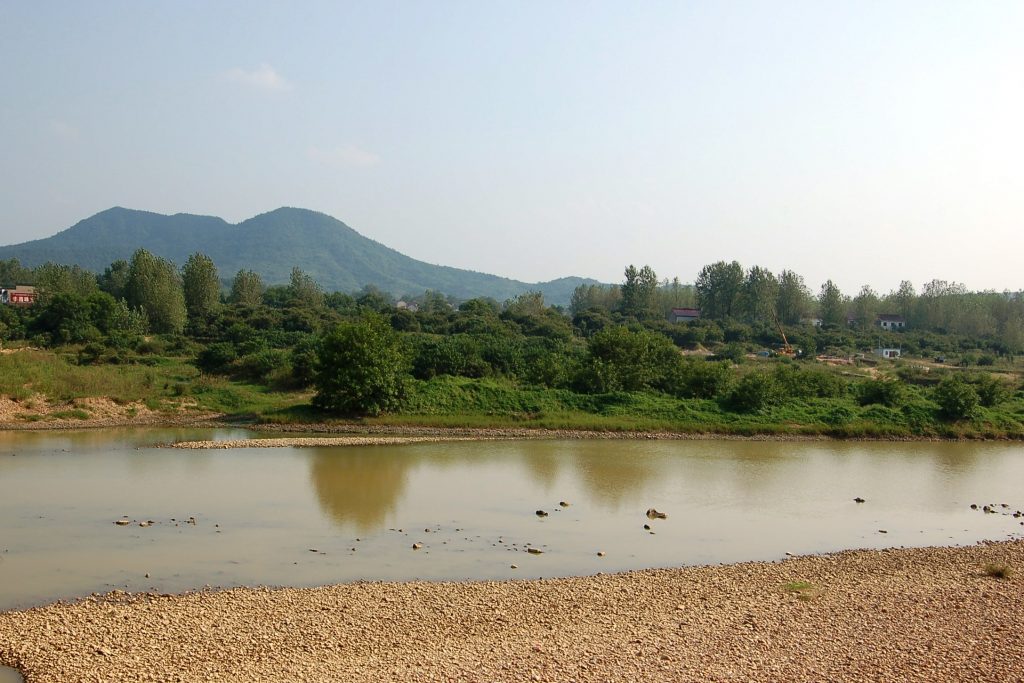
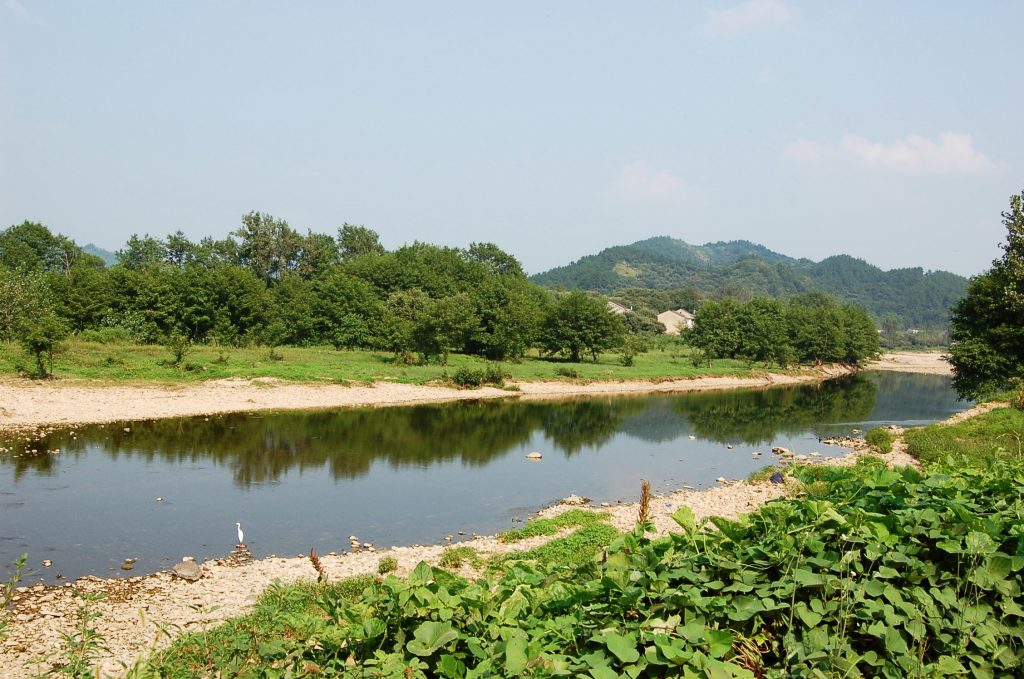
According to my local guides only one more topographic name from the painting still exists: the Guanyin Cliff. Unfortunately, it lays at a very inaccessible place deep in the mountains without any way or path leading towards this sight. Song Zhefa told me that he himself has made an attempt to get there. Because of the difficult terrain he did not manage to enter the cliff. After all, he even had lost the way, trying for a long time, to find a way back. The presentation of the cliff in the scroll finally appears rather inconspicuous and poses little potential for a comparison with the real landscape. However, as a fixed point for reaching the so called Jade Dragon Gorge, a visit seems worthwhile, but according to Song Zhefa it would require a helicopter to get there. Facing these descriptions and the high summer temperatures we finally gave up the idea of a new attempt to reach Guanyin Cliff. So let us return to the headwaters of the river. Above the valley of Longman River there lies a restaurant below one of the summits. There I made a further localization. The coordinates of this fixed point are 31 ° 10 ’40’ ‘N / 116 ° 52’ 26 ” E. The Fig. 8 shows a view not far from this fixed point across the valley.
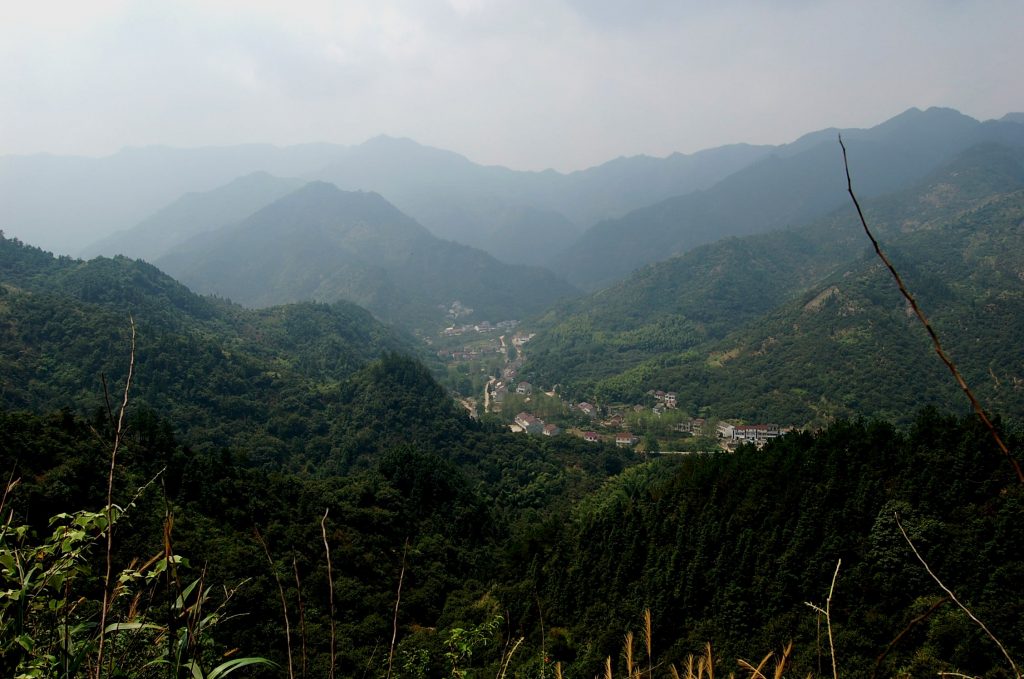
Approximately halfway between the valley and the mountain summit runs a waterfall downhill – the only one in significant size, I have seen on my excursion (Fig. 9). This may seem surprising, because Li Gonglin had painted numerous waterfalls in his scroll, but my local guides explained to me, that after appropriate rainfall many smaller and larger cascades arise in this area. Permanent waterfalls (like the one pictured) would thereby alter their appearance considerably. However, examining the sequences of the scroll, they could not derive any concrete parallels to existing waterfalls of this region. Li Gonglin seems to have used these elements rather for an abstraction of the real landscape and as a link between the individual scenes.
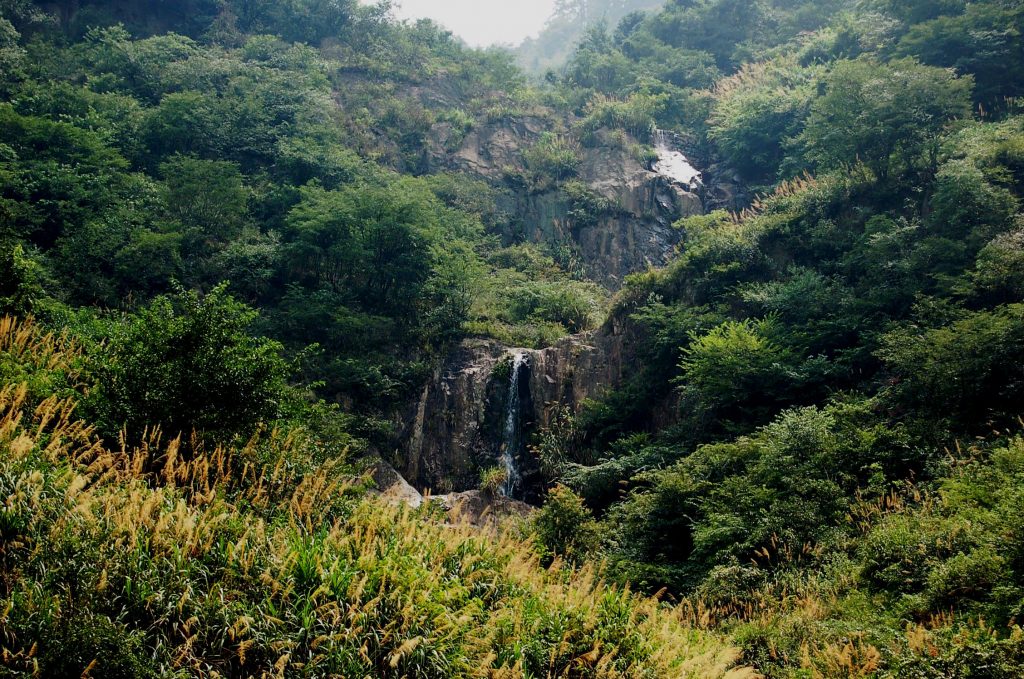
The opening sequence of the picture scroll is marked by a river course with mountains rising directly behind it (Fig. 10). This valley of Longmian River has the same topographic structure. Like the opening section of the painting, Figure 11 shows buildings scattered on the mountain slopes and Figure 12 the distinctive rock structure on the banks.
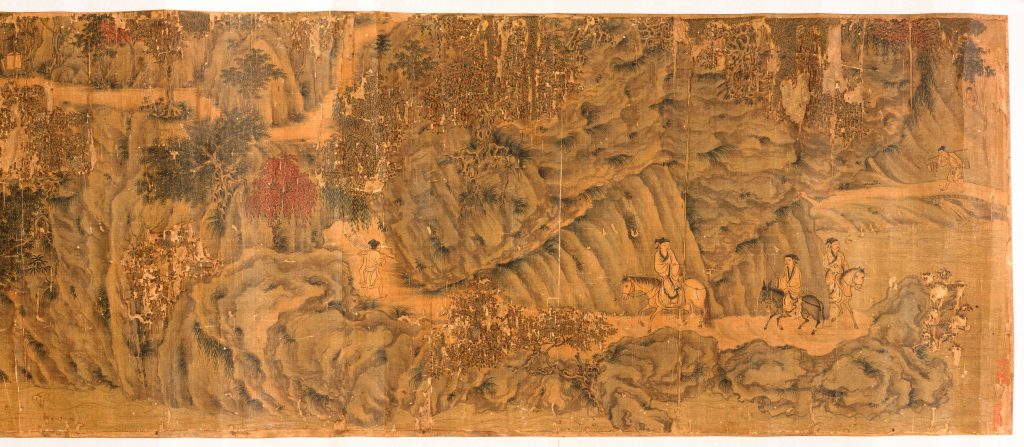
Fig 10.1: Opening section of Li Gonglin’s Mountain Villa Scroll. Berenson Collection, Villa I Tatti, Florence, reproduction by approval of the president and colleagues of the Harvard College, Photo: Paolo De Rocco, Centrica srl., Florence.
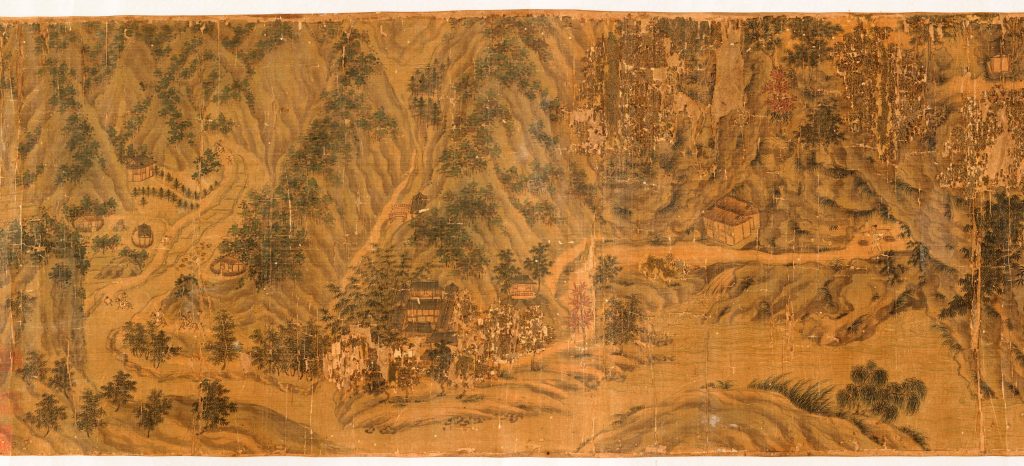
Fig 10.2: Opening section of Li Gonglin’s Mountain Villa Scroll. Berenson Collection, Villa I Tatti, Florence, reproduction by approval of the president and colleagues of the Harvard College, Photo: Paolo De Rocco, Centrica srl., Florence.
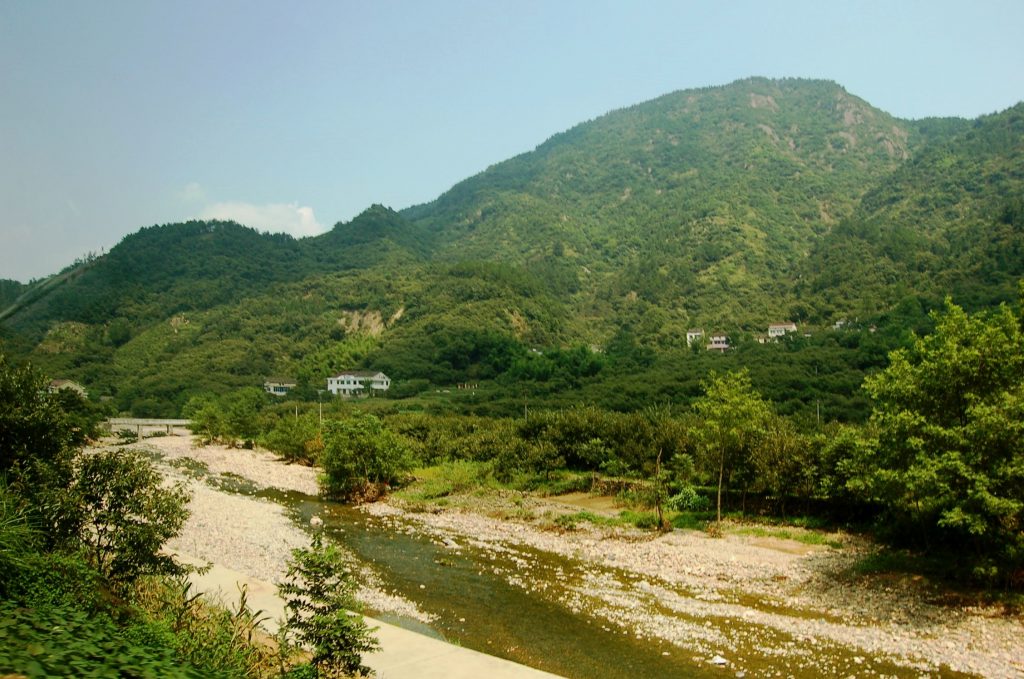
Comparing the opening section of the scroll with the concrete landscape it has to be noticed that Li Gonglin shows much more rocks covering the riverbank and the mountainside. Unfortunately, the absence of visible mountain peaks in the painting makes it impossible to compare the compete impression of the Longmian River Valley with the scroll. However, I was able to make a remarkable discovery of this river section. Figure 13 shows a semicircular rock formation at the river bank, which is composed of multiple layered rock surrounded by lush vegetation. The conformity with the Precious Blossom Cliff (宝华 巖, Fig. 14) seems obvious to me. Although abstracted by Li Gonglin who
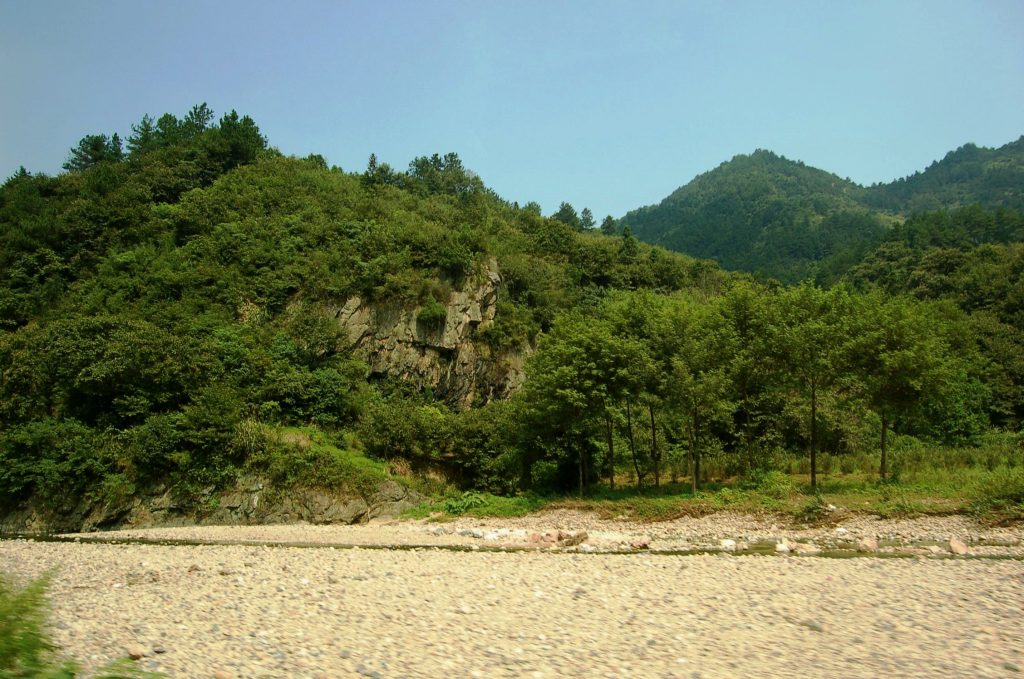
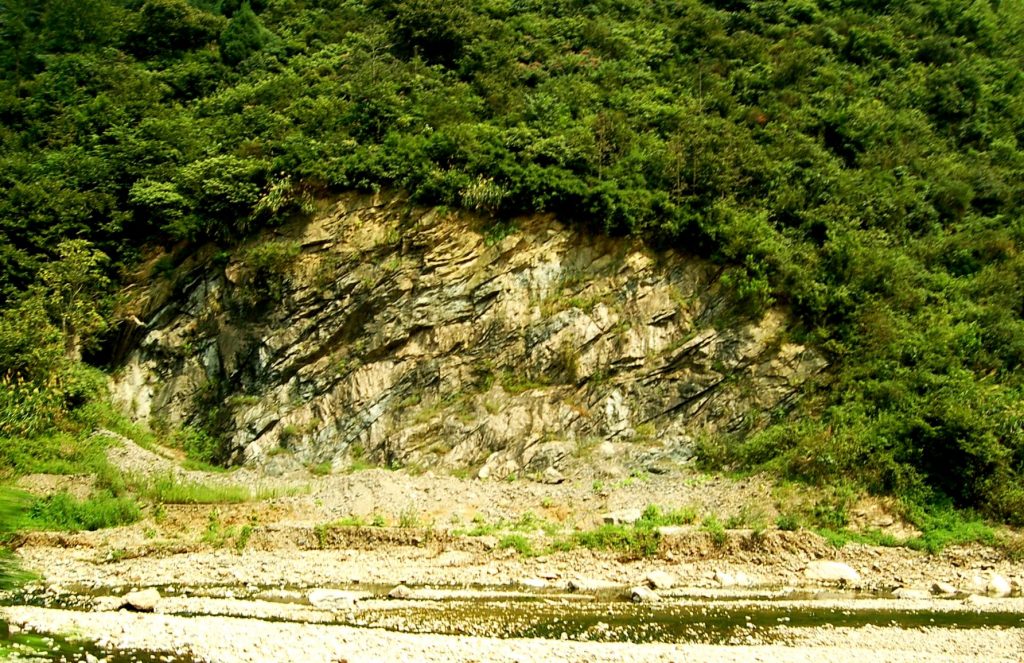
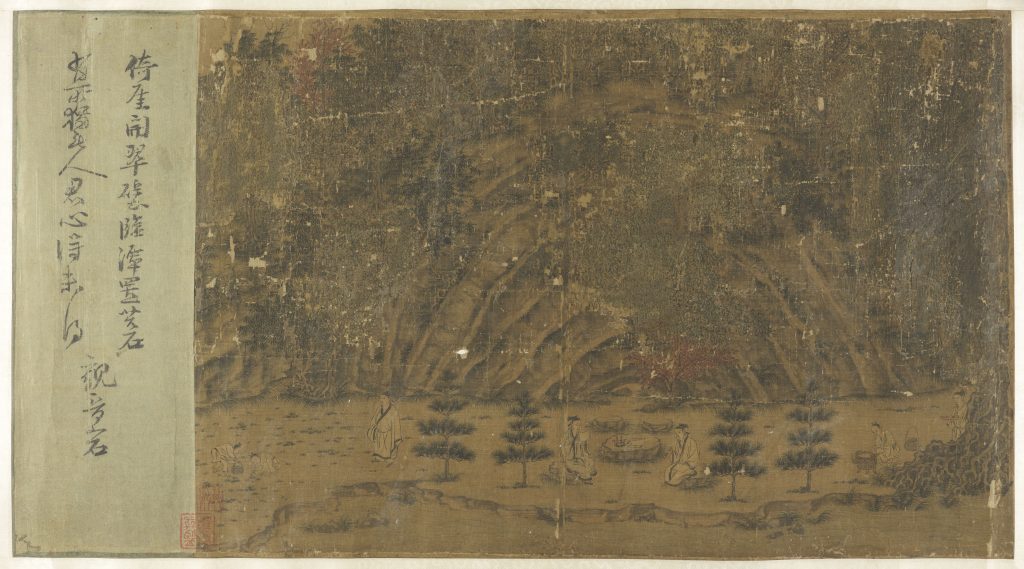
Fig 13: Precious Blossom Cliff section of Li Gonglin’s Mountain Villa Scroll. Berenson Collection, Villa I Tatti, Florence, reproduction by approval of the president and colleagues of the Harvard College, Photo: Paolo De Rocco, Centrica srl., Florence.
shows perfectly semi-circle layers of rock, I expect to have undoubtedly identify a concrete image of the scroll within the real landscape. Whether it is exactly the Precious Blossom Cliff of the Li Gonglin scroll must be remain open, because I have seen some other more or less similar rock structures during the excursion.
Discovering the image of Precious Blossom Cliff was one of my secret wishes during the excursion, because I thought it was quite unlikely that such an unusual rock formation should be fictitious. However, similar hopes for discovering the strange image of the Peak of Accumulated Gems (宝 积 峰, Fig. 14) were not fulfilled. My companions neither knew the name of the peak nor identified the image with a real peak in this area by examining the scroll. As they have told me, the constellation with a correspondingly high waterfall next to the peak is not to be found in the area. Song Zhefa argued that the structure of the painted peak is rather typical for a number of peaks in the region and that those strange rocks at the mountain tops are visible only in autumn, when the leaves start to fall. This statement corresponds with the final version of the Mountain Villa Scroll which shows some trees with red autumn leaves.
At this point, a note may be attached. Why did my local guides not notice the semi-sircular rock structure at the riverbank? It was only when I made them aware of it, that my observation was broadly welcomed. The reason for this was the widespread lack of knowledge of the group members about the scroll and its details. On the occasion of this study I have targeted all available books on Song painting and Li Gonglin in well-stocked bookshops across China without having discovered a single sequence from the Mountain Villa Scroll. Only the Internet offers images of the Taipei Scroll which is far from being complete. Song Zhefa treated the Mountain Villa Scroll in his book only briefly without publishing an image of it.
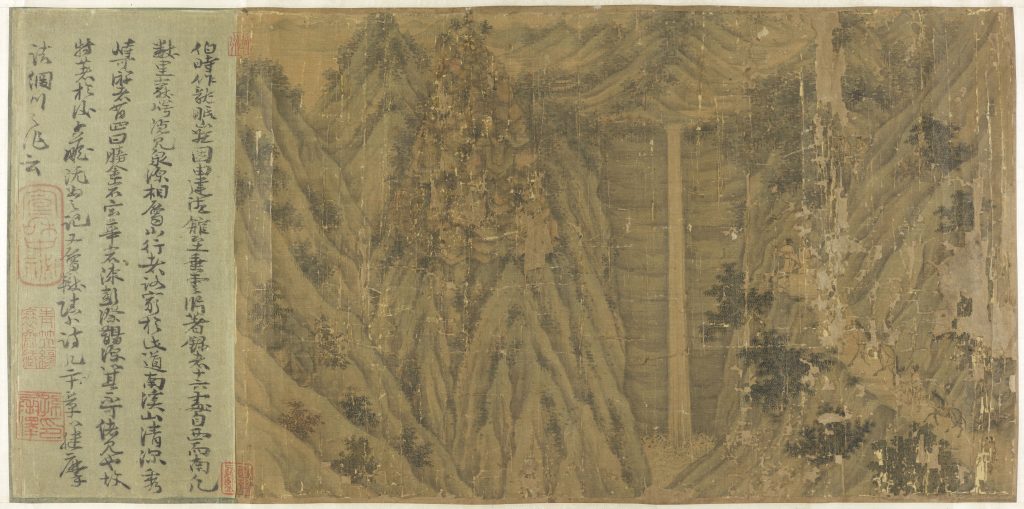
Fig 14: Peak of Accumulated Gems section of Li Gonglin’s Mountain Villa Scroll. Berenson Collection, Villa I Tatti, Florence, reproduction by approval of the president and colleagues of the Harvard College, Photo: Paolo De Rocco, Centrica srl., Florence.
Immediately after arrival at Longmianshan I put in front of the group reproductions of the Beijing, Taipei and Florenz version of the Mountain Villa Scroll, which they acknowledged with great astonishment. One of the officials of the local Office of Tourism took the opportunity to take photos of the images. A remarkable result was the fact that one of the guides who grown up in the area declared spontaneously to be able to assign one of the motives of the scroll with absolute liability of the real environment. It was the Lingling Valley section, which we visited at once. The way follows the river and then changes the direction around a mountain to reach the neighboring valley. On the way, my companions stopped in front of a cave (Fig. 15). At this point, the still narrow river which looks more like a brook runs through the cave, passing the mountain through the underground for a distance of approximately 400 meters, to come out on the other mountain side. At this point the road passes the river over a bridge. The cave lays at 31 ° 10 ’49’ ‘N / 116 ° 53’ 40 ” E. The entry of the cave is large enough for several humans. In the draft version of the Mountain Villa Scroll the river disappears in fact behind the Hut of Mysterious Completion. After a sequence with a steep mountain path, Li Gonglin shows the Cave of Extending Blossoms (延 华 洞, Fig. 16). Just like the described fixed point it is traversed by a brook. It would be extremely unlikely to accept an accidental coincidence. Again, it was only my immediate juxtaposition of the corresponding section of the painting with the real scene that surprised my guides and led to broad agreement. The present name of the cave is Moyuan (摩 园). As they told me, only the entrance of the brook forms such a cave, the exit on the other mountain side is small. Slightly irritating is the fact that in the scroll Li Gonglin shows the water running out of the cave. Should his memory had become unclear in this case after years of absence from Longmianshan? Maybe it’s just a trick to emphasize the composition line of the painting which shows all the cascades and brooks coming down from the mountain side running towards the viewer. My companions and I were sure to have discovered here an undoubted match, especially as this phenomenon is unique in the whole area.
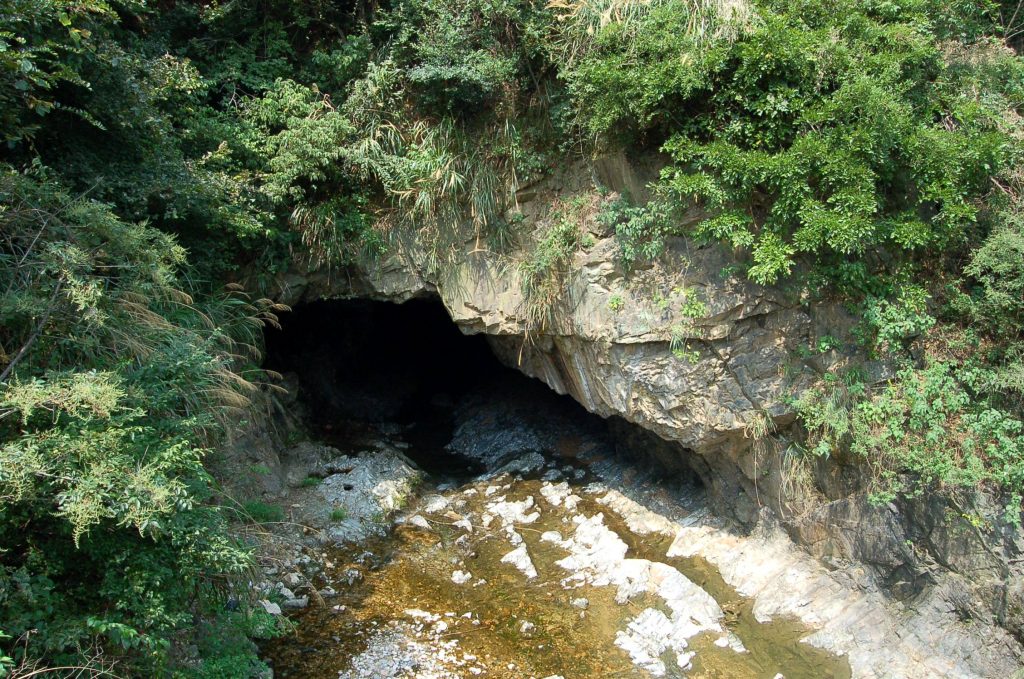

Fig. 16: Cave of Extending Blossoms, section of Li Gonglin’s Mountain Villa Scroll. Palace Museum Taipei.
We followed the watercourse further uphill, entering another neighboring valley (Fig. 19). In one of its side arms we finally reached that place, which had been identified by one of the guides as the Lingling Valley (冷冷 谷, Fig. 17) of the Mountain Villa Scroll. The place is crossed by a small suspension bridge and a small pavilion stands on a rock above the riverbank. The small valley is located at 31 ° 9 ’12’ ‘N / 116 ° 53’ 5 ” E. The mountain peaks rising up not far behind the valley mark the border to Tongcheng County, Anqing Prefecture. All participants of the excursion spontaneously agreed to have undoubtedly found Lingling Valley. The chronology of the image sequences between Longmian River in the opening sequence, the Cave of Extending Blossoms and Lingling Valley finds its counterpart in the real landscape. The narrow, deep valley with the low waterfall at the end and the forest above corresponds entirely to the real landscape (today a lot of stones can be seen in front of the waterfall, lying in the river. Not long ago, they were moved to the valley by a flood during heavy rainfalls). The small waterfall on the right of the paining however, does not exist (at least permanently – maybe during heavy rain some cascades could rushing down the slope close to the entrance of the valley). In general I support the opinion of Song Zhefas that the scenes of the scroll are an abstraction of individual, not directly related places of eastern Longmianshan. Today the pace is called Longtan Valley (龙潭, fig. 18). The name from the scroll (“Lingling” which means Cold-Cold-Valley) seems quite suitable in a direct comparison of the scenery spot. The valley is protected against strong sunlight, lays deep and narrow and the cold, crystal-clear mountain water creates a sort of microclimate that is much cooler than the surroundings.

Fig. 17: Lingling Valley, section of Li Gonglin’s Mountain Villa Scroll. Palace Museum Taipei.
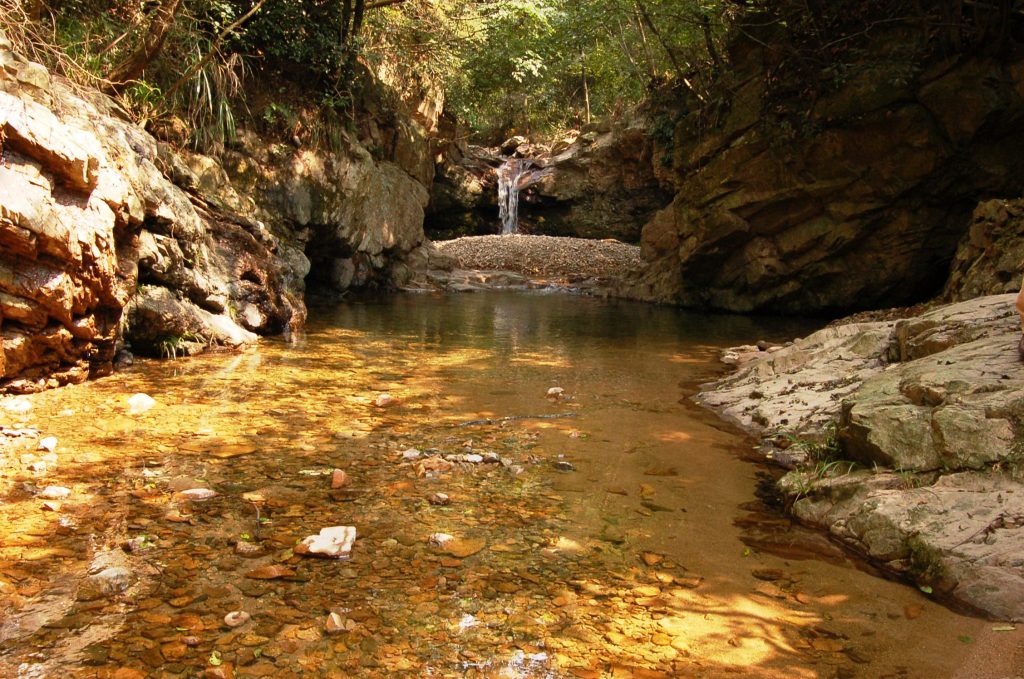
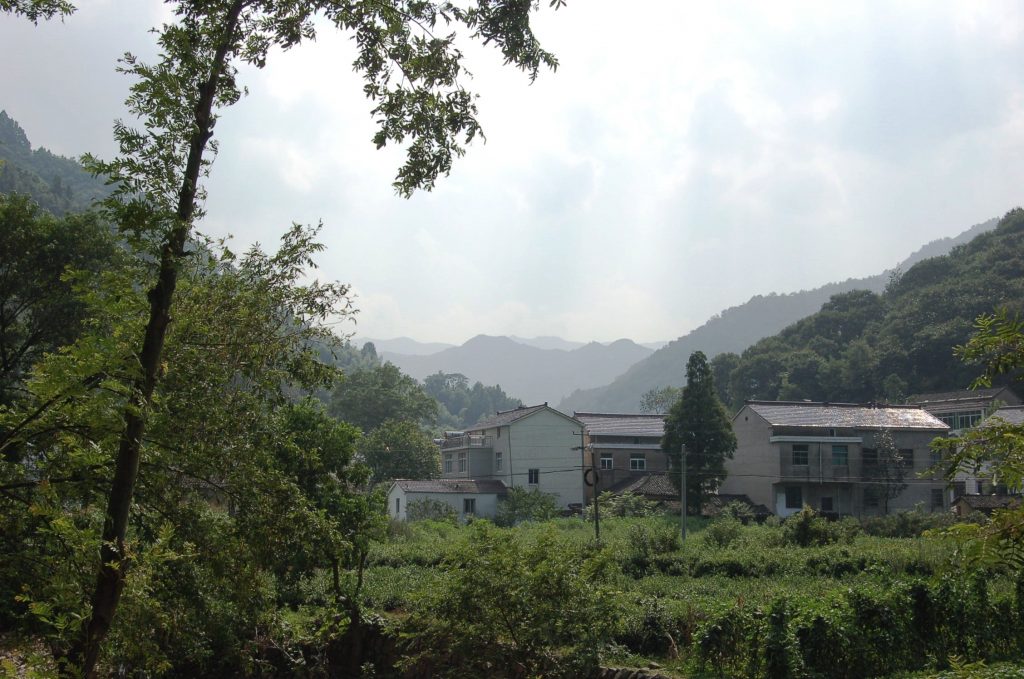
If we agree, that the fixed points of Longmian River and its section called Magpie Stream, Moyuan Cave and finally Longtan Valley are matching with the sights of the scroll, we can derive an area between 31° 9′ 0’’ N to 31° 11′ 0” N and between 116° 52′ 0’’ E to 116° 54′ 0” E, in which Li Gonglin’s mountain villa must had been located. The painting exaggerated the appearance of the terrain by a predominance of cliffs and waterfalls, which differs from reality. Li Gonglin has painted the mountain slopes much steeper and more rugged. In summary, the described impressions and discoveries of my excursion show that the Mountain Villa Scroll is based on the real environment of eastern Longmianshan, but underwent a strong abstraction under the painting brush of Li Gonglin. If Su Dongpo, who argued in this way more than 900 years ago, would had been able to take a walk through the eastern Longmianshan, he could had felt vindicated.
Thorsten Schirmer has been working since 1984 in the style of Chan painting. Specialized in the traditional landscape subject, he designs his works only with his fingers and black ink. His turning to these ancient forms of expression and painting techniques, which are even rare to find in China, earned him a high reputation in the motherland of this art. At age 21, he was appointed as a guest teacher at the Art Department of Anhui Normal University, since 2013 he is professor at the Art College of West Anhui University. His works have been exhibited in China, the U.S. and Germany. In addition to numerous journal articles, he has written several books about the painting tradition of China, its philosophy and the cultural background. Thorsten Schirmer has organized numerous art projects with Chinese colleagues in Germany. He is a founding member of the Chinese Center Hannover and initiator of the partnership between the Region Hannover and the Chinese Luan Prefecture.
Read the full magazine
1 Der große Brockhaus – Kompaktausgabe in 26 Bänden. Wiesbaden 1983, Book 1, p. 43
2Chan (Jap. Zen) is a school of Mahayana Buddhism. The Chinese name “Chan” is derived from the shortened phonetic form of the Sanskrit word “Dhyana” (literally: contemplation). Chan is therefore also referred to as “meditation school”. Core of Chan is the conviction of the sudden realization of enlightenment to be attained by contemplative practices or by studying paradoxical parables and aphorisms of the patriarchs and famous teachers of Chan.
3 This most well-known textbook on Chinese painting was published in 1670 by the Chinese artists Wang Gai and Li Liufang.
4 For more details about Li Gonglin’s life and his Mountain Villa Scroll see Harrist, Robert E.: Painting and Private Life in Eleventh-Century China. Mountain Villa by Li Gonglin. Princeton, 1998
5 Among others two fine versions of the draft are preserved at Palace Museum Beijing and Palace Museum Taipei, which are highly possible early copies. The final version is best preserved in an early copy which is now housed in the Berenson Collection, Villa I Tatti, Florence.
6 s. Pan, Anyi: Painting Faith. Li Gonlin and Northern Song Buddhist Culture. Leiden, 2007, Chap. 1

